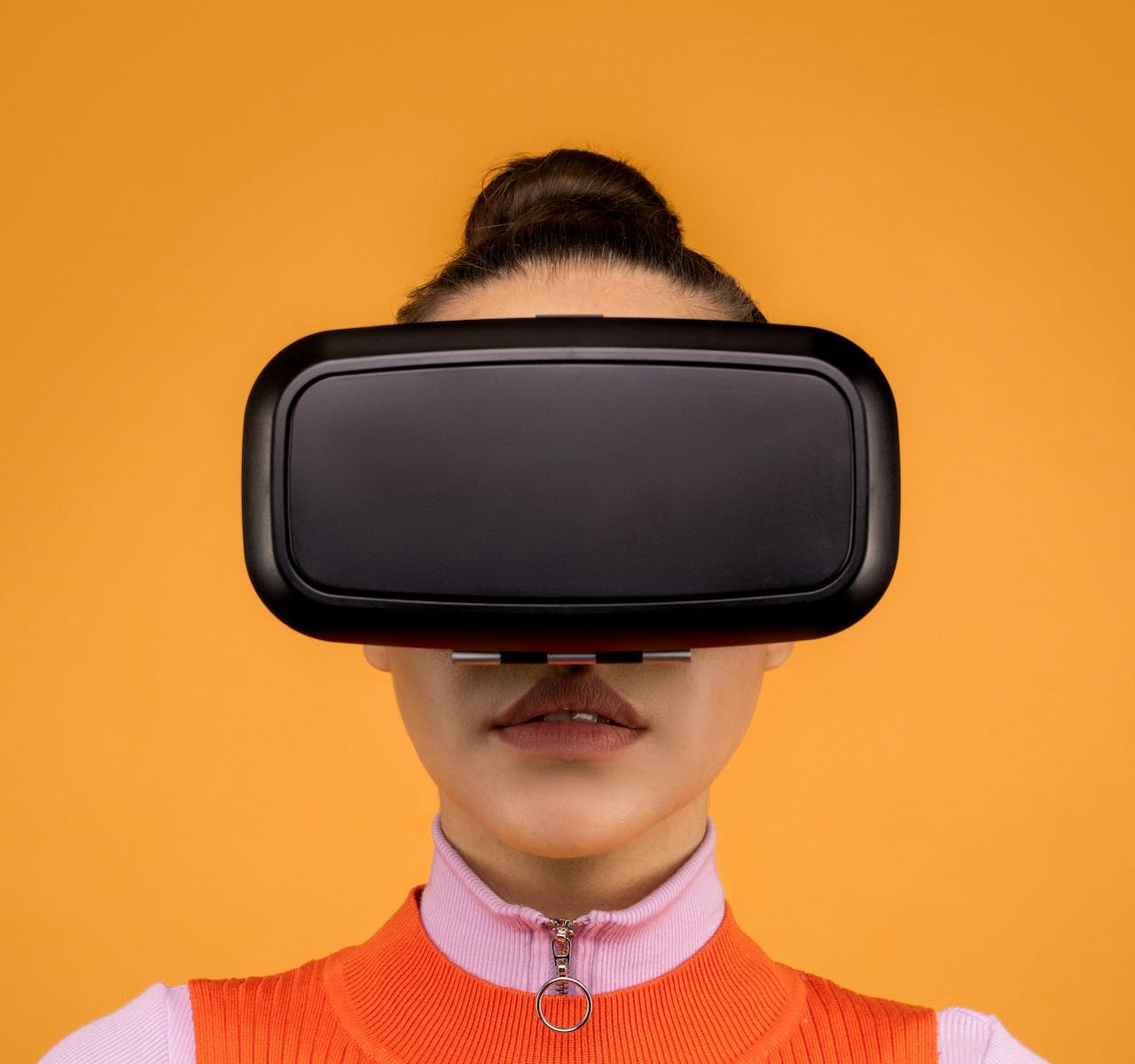By: Amanda Tong
VR, or virtual reality, is often conducted through the wearing of sensor headsets and hand-held controllers. They form immersive 3D images and experiences that bring users to another world.
When thinking of VR, people often perceive it as an entertainment tool and not as a guidance that can promote self reflection and growth. So this blog focuses on the hidden side of VR that is often buried in the shadows. VR can have so many possibilities and potential to be used as an effective aid in many fields, and we are going to emphasize on its educational purposes, specifically regarding moral standards.
Let us start by asking one of the two most important questions: can we learn what is right and wrong with the help of VR?
The short answer is yes, but we need to prove that right and wrong can indeed be learned.
Why and how?
Right and wrong can be learned, or have to be learned because it is a natural part of our cognitive development and understanding. Learning is an ability ingrained within us humans, and learning through observation is a primary behavior that is inherited down through our ancestors. Seeking (for food and water) became an unconscious yet instinctive behavior that happens naturally. We mimic the ones around us to learn, usually at a young age. It just happens vicariously, and the same applies to moral standards.
Society won’t function without moral and ethical manners; contrary, moral and ethical standards are made by society, therefore people are forced to have morals. Every generation of us goes through this process and needs to confront these norms. Thus the unconscious mind of humans influences the future generations to do the same.
Then the rest is then simpler to understand; younger children are implicitly subject to the influence of some older people around them to learn about rightness and wrongness. Morals are learned through socialization, the interaction with other people, with the outer world/environment; these characteristics shape our inner sense of rightness about our own behavior and of others.
Don’t believe me? Let me give you a proof.
In 1961, Albert Bandura, an American psychologist performed an experiment on children’s interactions with dolls to investigate if social behaviors (aggression, in this case, sense of wrongness) can be acquired by observation and imitation. The experiment is conducted as such: 20+ kids are made to watch an adult attack a toy named Bobo Doll, another 20 kids are kept in a neutral environment that witnesses nothing. Then they are all led to another room filled with different kinds of toys including a tea set, crayons, and of course, a bobo doll.
Guess what? (connection to the idea of observational learning.)The group of kids that witnessed adults kicking and hurting the doll started to do the same thing. They learned from adults that doing so is okay, acceptable, will likely to not be punished, and they start similar behaviors. This says loudly and clearly that not only actions can be learned, the thinking underlie, the thoughts that “hurting is okay to do”, the moral of wrongness can be built within the kids too. Easily, I would even say.
Back to the societal topic though, there might be technically no such thing as definite personal and complete independent morals. Think about this, does a kid growing up from an isolated room, no communication with other people at all and there is no pathway for them to get a hint of the outside world, do they know what is right and wrong to them?
No! Because the kid has no one to observe, they do not have anything to learn from, simple as that.
Next comes the second part of the question: how is VR used to learn then, especially to learn moral standards that are unique to humans?
The answer will be surprisingly easy: the same way people learn in real life!
I propose a scenario: there is a young boy who has been trapped in VR headsets his whole life, the VR mimic exactly about how the world works, and due to coding/programming, he is able to learn about moral standards through the use of technology, this so-called immersive yet “fake” VR world. And suddenly one day he is released and goes into contact with the real world, he makes friends with other “real” human beings, and what will happen to the boy?
Nothing! He is interacting with others the same way he did in the VR headset, it is the same, his behaviors will not alter because this is the way he has been taught to behave and he clearly knows that, the rules of human interaction and societal function between the worlds (real and VR) are the same!
For this reason, VR remains to be a useful and powerful tool that helps people “learn” or even adapt to what is right and wrong. Without disturbance to the real world, it provides multiple and never-ending opportunities to allow people to “try again” and improve, plus, no one is going to judge others from making mistakes in VR.
Speaking of which, my personal visit to Studio X located at University of Rochester is a great example of demonstrating infinite possibilities of VR. With the help of 3D scenarios, a group of professionals developed the real life Trolley Problem that one can personally experience the dilemma with a shift of perspective. In this scenario, I become the person who has to make the decision. I witnessed the train, switch, track, and people as if I was reincarnated to another soul and saw all of it happen. This makes me wandered off a little, the resemblance of the VR world to the real world brings an interesting and novel experience to my brain. This consequently made me more free in making my decisions, to think more thoroughly in my actions because I now have that confidence gifted by the VR world.

In the Trolley Problem, there is no such thing as right and wrong, it depends fully on one’s personal beliefs, but as the claim went, VR provides multiple chances for people to experience, allowing them to make mistakes on a trial basis, and thus reflect upon their choices and behaviors. Through 3D characters and images, VR lets users to physically transform their identity and “step in other’s shoes” let them realize the existence of compassion, empathy, and therefore the sense of rightness (moral).
VR also supplies experience. Hauser, in his book Moral Minds: How Nature Designed Our Universal Sense of Right and Wrong, argues that experience alters people’s moral behaviors, experience guides what we do. This is totally true, there are many restrictions in people’s lives that prevent them from doing what they want to do, and VR can offer the possibility for them to gain this freedom. VR offers a more receptive attitude towards people’s mistakes, yet what is learned in VR can be taken away as a lesson in the real world, proving that VR is a useful tool for educational purposes. VR supplies opportunity with chances of trial and error.
In conclusion, we can learn what is right and wrong through the use of VR because the ways of learning through VR do not differ much from the various approaches in learning through our real life experience. In fact, it is done already: in the Frontier article Enhancing Our Lives with Immersive Virtual Reality, it mentions multiple ways of how VR is already used in the psychological and education industry. VR is slowly coming into our normal lives as a powerful tool to design or even create new ways of learning for the younger generation, and trusting it with the job to teach moral standards is not an impossible task.
It is safe to claim that people are able to learn not only what is right and wrong, but also through the help of VR experiences.
APA Citation:
Slater, M., & Sanchez-Vives, M. (n.d.). Frontiers | Enhancing Our Lives with Immersive Virtual Reality. 3. Retrieved September 6, 2023, from https://www.frontiersin.org/articles/10.3389/frobt.2016.00074/full
Hauser, M. (2006). Moral minds: How nature designed our universal sense of right and wrong (pp. xx, 489). Ecco/HarperCollins Publishers.
Singh, O. (2023). What is extended reality (XR), explained. Cointelegraph. https://cointelegraph.com/explained/what-is-extended-reality-xr-explained
5 Tips for Cultivating Empathy. (2018). Making Caring Common. https://mcc.gse.harvard.edu/resources-for-families/5-tips-cultivating-empathy
Begley, S., & Kalb, C. (n.d.). Learning Right From Wrong. Retrieved September 28, 2023, from https://www.qcc.cuny.edu/socialsciences/ppecorino/ethics_text/Chapter_2_Moral%20Development/Learning-Right-From-Wrong.htm
Decety, J., & Cowell, J. M. (n.d.). Our Brains are Wired for Morality: Evolution, Development, and Neuroscience. Frontiers for Young Minds. Retrieved September 28, 2023, from https://kids.frontiersin.org/articles/10.3389/frym.2016.00003
Limone, P., & Toto, G. A. (2022). Origin and Development of Moral Sense: A Systematic Review. Frontiers in Psychology, 13. https://www.frontiersin.org/articles/10.3389/fpsyg.2022.887537
Mcleod, S. (2022, November 3). Bandura’s Bobo Doll Experiment on Social Learning. https://www.simplypsychology.org/bobo-doll.html
Whitman, M. (2018). 1.3: Can Morality Be Taught? Humanities LibreTexts. https://human.libretexts.org/Bookshelves/Philosophy/Ethics_in_Life_and_Vocations_(Whitman)/01%3A_Chapters/1.03%3A_Can_Morality_Be_Taught%3F
Introduction of StudioX presentation with Writing 105-Uncertainty class. September 12, 2023.
With the help of Spelling and Grammar Correction Tool from Google Docs.











